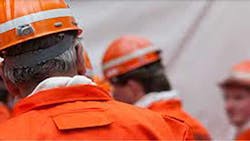The typical corporate organizational chart isn’t what it used to be! It has gone from fat to flat, dotted lines have largely disappeared and the safety department has been moved around like a chess piece. However, in many organizations, the safety professionals still fill a subject-matter specific management role in safety. In such organizations, operational managers and supervisors tend to let the safety professionals manage safety while they take care of “business.”
There are several potential problems with this model that have driven many high-performing organizations to make changes. The most common of these problems are as follows:
- It creates an artificial dichotomy between productivity and safety – Workers tend to get their priorities from their immediate supervisor. When the supervisor stresses getting the job done and someone else shows up with another set of priorities like safety, the two tend to conflict. Workers begin to view safety as something that competes with their job. Safety doesn’t become the way to work, but a distraction from work. Do they do the job or focus on safety? When pay increases and promotions come from production rather than safety, the dichotomy deepens even more.
- It lets production managers and supervisors “off the hook” for safety – If the safety person is in charge of safety, why should the production people worry about it? They feel free to concentrate on getting the product out the door or the services delivered. They can train people in job skills and let safety train them how to not get hurt. It drives the dichotomous thinking and excuses production from one of their key areas of responsibility. It also tends to separate the definitions of production and safety rather than establishing the more unified concept of safe production. Safety and quality should be an integral part of production and separating them creates an artificial and dangerous mentality that results in defects and accidental injuries.
- It distracts safety personnel from important support functions – When safety professionals have to be visible on the shop floor and make their presence felt, they develop a mentality of herding cats. They are chasing the risk-takers like desperate traffic cops rather than helping supervisors to become effective safety coaches. They don’t have time to analyze data or develop proactive strategies when they are enforcers. If they are the ones who catch violators of safety policies, they are often the ones to handle the documentation and potential discipline through HR. They are already loaded with regulatory paperwork and trying to handle safety strategy as well as daily supervision and disciplinary issues, which usually means something gets neglected. It is human nature to take care of the urgent issues and neglect the important but less urgent ones.
- It stresses control over culture – The idea that workers must be “overseen” is counterintuitive to developing an effective safety culture. It takes more work up front to develop an excellent safety culture, but the effort is rewarded by decreased need for oversight and increased sustainability over time. Micromanagement is extremely counterproductive to cultural development. If safety professionals are constantly policing and managing the workers, they don’t have time to improve the culture, and the very activity stealing their time is also working against the kind of culture they need to develop.
From Production to Safe Production
Changing the organizational chart alone is not the answer. The most common solution is to restructure the roles, responsibilities and results expected from both safety personnel and production managers and supervisors. This redefinition of job responsibilities may require some adjustment as well as additional training, but it has the potential to solve these common problems and to enable the safety culture to make a significant improvement.
Production takes on the day-to-day responsibilities of safety oversight with the workforce. Since they are already overseeing workers in other aspects of their jobs, the magnitude of this additional responsibility is not as great as usually anticipated. The definition of production is expanded to safe production. Safety is the way you do your job, not another set of standards or activities. The expectations change from units out the door to safe units out the door. Production managers communicate safety and lead by example. Safety is another topic of production rather than a competing priority. Production leaders lead safety training with the help of safety professionals. The dichotomy between production and safety begins to blur and then disappear.
Safety personnel become the subject matter experts (SMEs) and advisors to production managers and supervisors. They teach production people how to become safety coaches. The coaching models used are not specific to safety, but are rather performance coaching models that fit both productivity and safety issues. Supervisors become better developers of worker skills in all areas. Safety professionals now have time to proactively analyze safety data and suggest areas of focus that will have the greatest impact. These focus areas are reinforced by the supervisors through their safety coaching in the field. Safety personnel can now participate in safety training and meetings and sit on safety committees and executive safety councils. They can help to develop safety strategy and address the issues that help to form a strong safety culture.
Workers now view safety as an integral part of their job and a critical element of productivity. They intervene with fellow workers when supervisors are not there to do so. They have a strong internalized definition of safety and receive regular feedback on their performance. They are empowered rather than micromanaged. All their priorities come from the same source and there is no artificial division of safety and productivity. They are the same thing.
This model is not specific to any one industry or type of organization. It has been used in a wide variety of organizations from public to private sectors in everything from high-tech to no-tech industries. In many cases, the only things these organizations have in common is a desire for excellence in safety and a recognition that having the safety department manage safety is not the way to achieve it.

